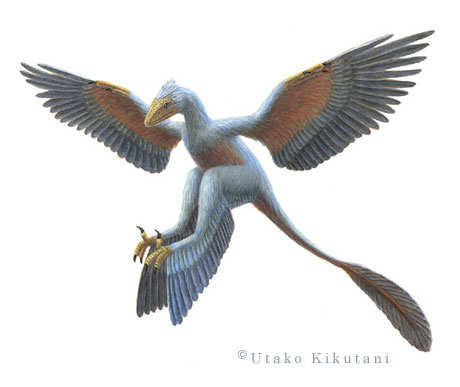Microraptor gui was an unusual creature. It was a small dromaeosaurid (bird-like) dinosaur that lived about 125 million years. It had four wings rather than two, with its hind legs forming the second pair. Microraptor was assumed to be a glider, but the configuration of the four wings during gliding was a mystery. Were the first wings held above the leg wings in a biplane formation (see illustration at right), or were all the wings kept in a single plane like a dragonfly’s wings?

Both sides have proponents. Sankar Chatterjee of Texas Tech University is the strongest advocate of the biplane configuration, stating that Microraptor could not have bent its hips around into the dragonfly conformation. More recently, a joint team from the University of Kansas and from Northeastern University in China came to the opposite conclusion. They built an exact replica of a Microraptor based on some exquisitely preserved fossils. This team, led by David Alexander, used their model to show that not only could Microraptor have rotated its hind legs into a monoplane, but that that configuration provided for more efficient gliding.

Model of Microraptor as a monoplane glider, created by scientists at the University of Kansas.
Two interesting questions arise from this controversy. One is whether two pairs of wings were a precursor to the single pair seen in modern birds. Interestingly, this would have mirrored the technological evolution of human flight. Alternatively, the double pair of wings may have been a side shoot rather than a main branch of the evolutionary tree.
The second question is whether these findings can lay to rest the longstanding controversy over the evolution of bird flight. There are two predominant theories as to how avian flight developed. One theory postulates that ancestral birds lived in trees, and used their proto-wings to glide from limb to limb and to parachute down to the ground. A second theory says that bird-like creatures ran around on the ground and may have flapped their stumpy wings to aid them in hopping up after insect prey.
In other words, did flight begin from the top down, or from the bottom up? Although this question is not settled to everyone’s satisfaction, it is clear that Microraptor could not have spent much time on the ground. The seven-inch long feathers and curvy claws on its feet would have precluded such a possibility. So, in this case at least, flight must have begun in the trees.
No comments:
Post a Comment